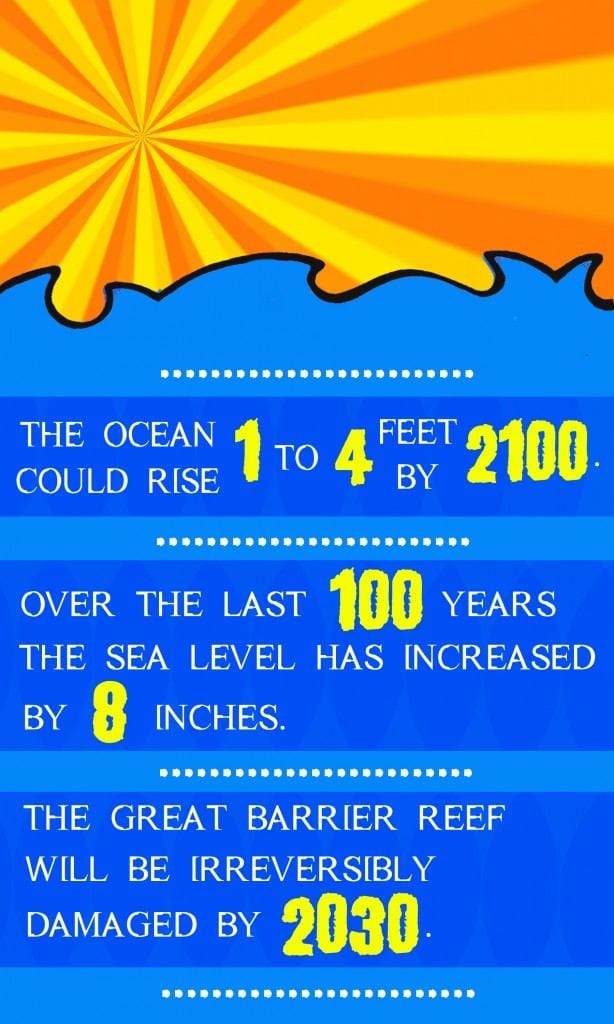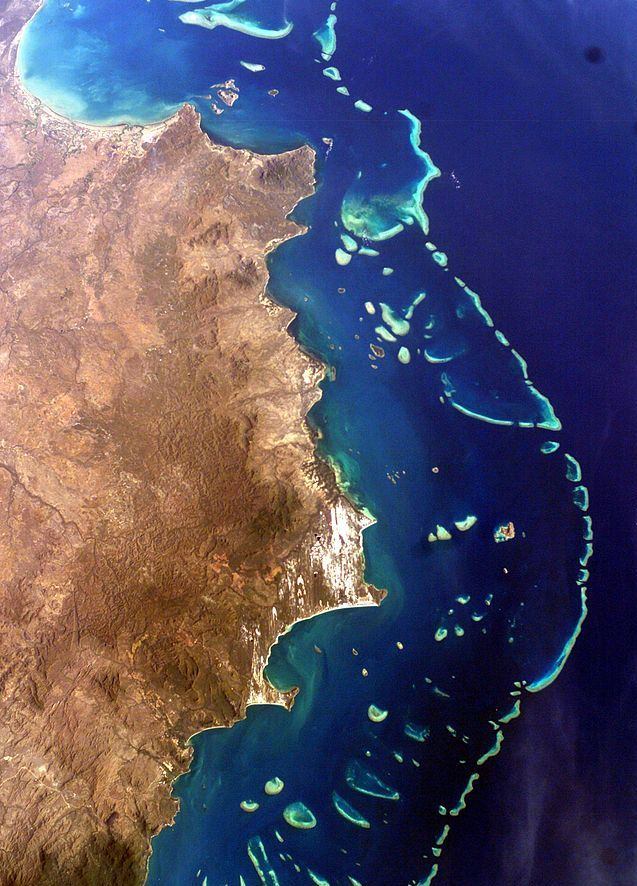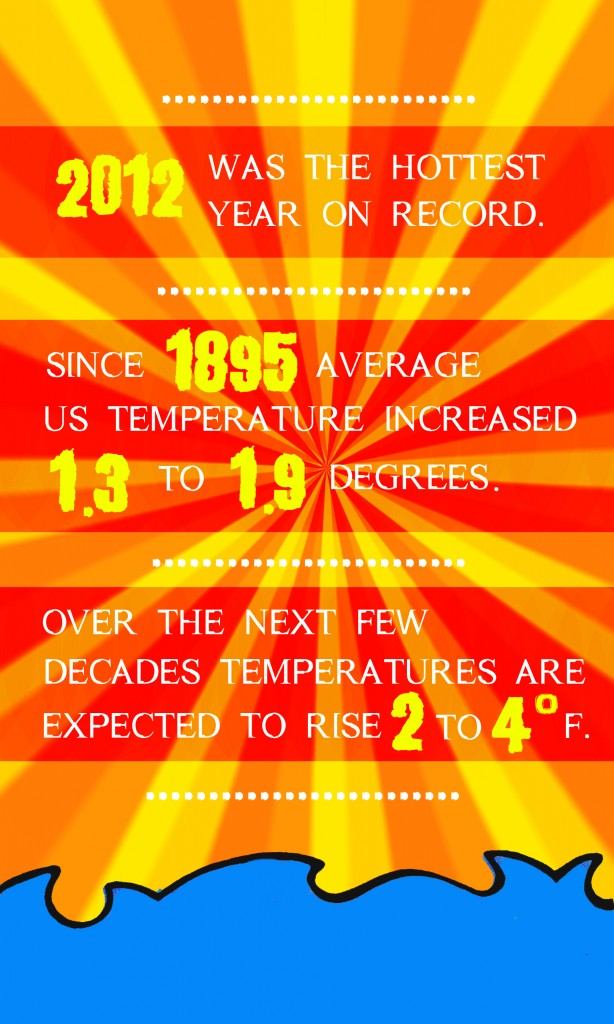New evidence is showing that climate change has reached a tipping point: melting Antarctic glaciers, rising waters, and changing temperatures are happening at such a rapid pace that they’re essentially irreversible, even if we make immediate changes. What does that mean for travel? Read on to learn how destinations and infrastructure are being impacted.
Increasing Ocean Levels
 Two groups of scientists reported that a large portion of the West Antarctica ice sheet has begun to melt, and the process is now unstoppable. If the ice sheet continues to melt, it could affect further parts of the continent and ultimately increase sea levels.
Two groups of scientists reported that a large portion of the West Antarctica ice sheet has begun to melt, and the process is now unstoppable. If the ice sheet continues to melt, it could affect further parts of the continent and ultimately increase sea levels.
According to the U.S. National Climate Assessment, sea levels could increase 1 to 4 feet by 2100.
The scientists monitoring the West Antarctica ice sheet predict that while the glaciers melt, ocean levels should rise slowly during this century. In the centuries after, however, sea levels could increase quite rapidly.
Over the last 100 years, the average global sea level has risen by 8 inches. When combined with coastal storms, rising sea levels can increase the risk of erosion, storm surge damage, and flooding.
The Polynesian island of Tuvalu is already experiencing airport runway flooding because the island’s average height is 6 feet above sea level. The saltwater table for these islands is already high, so if it moves higher, it could seep up through the ground and into the freshwater supply for crops and drinking water. All of these islands could face famine and water shortages, and many islands and atolls could be deemed unfit for travel by airlines or ships.
In the U.S., the main areas of concern are the coasts, including the Great Lakes area.
According to the assessment, more than 1.2 million people move to coastal areas within the United States each year. Today, those populations make up 164 million, or 50 percent of the country’s population. Many of these individuals move for better work opportunities, tourism included.
Almost 5 million Americans live less than four feet above the local high tide level for their area. These areas also include hundreds of billions of dollars of property.
Additionally, more than 180 million tourists travel to U.S. coasts each year.
Damage to Oceans
 The Great Barrier Reef has lost almost half of its coverage since the 1980s and is poised to be irreversibly damaged by 2030. A report by Selina Ward from the University of Queensland states that $6 billion in the tourism industry would be lost.
The Great Barrier Reef has lost almost half of its coverage since the 1980s and is poised to be irreversibly damaged by 2030. A report by Selina Ward from the University of Queensland states that $6 billion in the tourism industry would be lost.
According to the National Climate Assessment, burning fossil fuels increases the levels of carbon dioxide. When this interacts with ocean water, it creates carbonic acid, which increases the ocean’s acidity.
Over the last 250 years, ocean surface waters have become 30 percent more acidic due to the amount of carbon dioxide absorbed from the atmosphere. This makes ocean water more corrosive, which makes it very difficult for marine organisms with shells or skeletons made of calcium carbonate (such as coral) to survive, grow, and reproduce.
Salt marshes, reefs, mangrove forests, and barrier islands protect coastal ecosystems and manmade infrastructure against storm surges. Factors like coastal development, erosion, and sea level rise can erode these barriers, which increases the risk of damage during and after a major storm.
Airports & Flooding
According to the National Climate Assessment, coastal infrastructure including airports and port facilities are “increasingly at risk from sea level rise and damaging storm surges.”
Additionally, airports with at least one runway 12 feet or less above sea level could experience flooding during storm surges. In 2012, Hurricane Sandy flooded all three of New York City’s airports: John F. Kennedy, Newark, and LaGuardia. LaGuardia had to close for three days.
According to a 2002 Transportation Department report, LaGuardia already had a dike and pumps for floodwaters.
Shortly after Superstorm Sandy, New York Governor Andrew Cuomo wrote an op-ed piece published by the New York Daily News.
He mentioned that Sandy was responsible for the deaths of 60 individuals and more than $30 billion in damages in the state of New York alone. He also stated changes that needed to be made to help future generations withstand another storm and reduce climate change.
Prior to Hurricane Katrina, New Orleans airports had restructured and avoided flooding.
Electrical and mechanical equipment essential to LaGuardia and John F. Kennedy Airport is being moved to higher ground, where it should be safer. Oakland Airport is set to begin a dike improvement program that should take about five years and cost $10 million.
Changing Temperatures
 According to the Climate Assessment, 2012 was the hottest year on record in the continental United States, and temperatures are rising more quickly in northern areas.
According to the Climate Assessment, 2012 was the hottest year on record in the continental United States, and temperatures are rising more quickly in northern areas.
Alaska has seen the largest temperature increase since 1970, far greater than the continental United States has experienced. As a result, permafrost has been thawing rapidly, which continues to cause extensive infrastructure damage.
The past decade has also been the hottest on record for both the U.S. and the world. Since 1895, the average temperature for the U.S. has increased from 1.3 to 1.9 degrees Fahrenheit. The majority of that increase occurred after 1970.
Over the next few decades, temperatures are predicted to rise between 2 and 4 degrees Fahrenheit.
If that doesn’t sound like a big change, consider reports claiming that as many as 750 people died in the UK in the summer of 2013 due to heat-related issues.
Destinations originally thought of as great places to cool off may get too hot in the future.
Additionally, areas known for their warmer climes might become unbearable. In 2010, the Amazon suffered its worst drought in 60 years, killing fish by the thousands in rivers and drying up drinking wells.
Droughts and heat waves have swept the world. The National Climate Assessment indicates that “Extreme heat is damaging transportation infrastructure such as roads, rail lines, and airport runways.”
Thirteen of the fourteen hottest years ever recorded all occurred within the last century.
Between 1958 and 2012, precipitation decreased in Hawaii by 12 percent. Alternatively, it has been increasing in the rest of the United States. The Northeast experienced a 71 percent increase, which was followed by a 37 percent increase in the Midwest.
For more information about climate change and travel, check out:
- How Climate Change Could Increase Turbulence
- Yellowstone National Park: Hot(ter) & Bothered
- The Top 10 Eco-Friendly Gadgets for Earth Day
By Cody Brooks and Stephanie Ervin for PeterGreenberg.com. Graphics by Karie McNeley.












